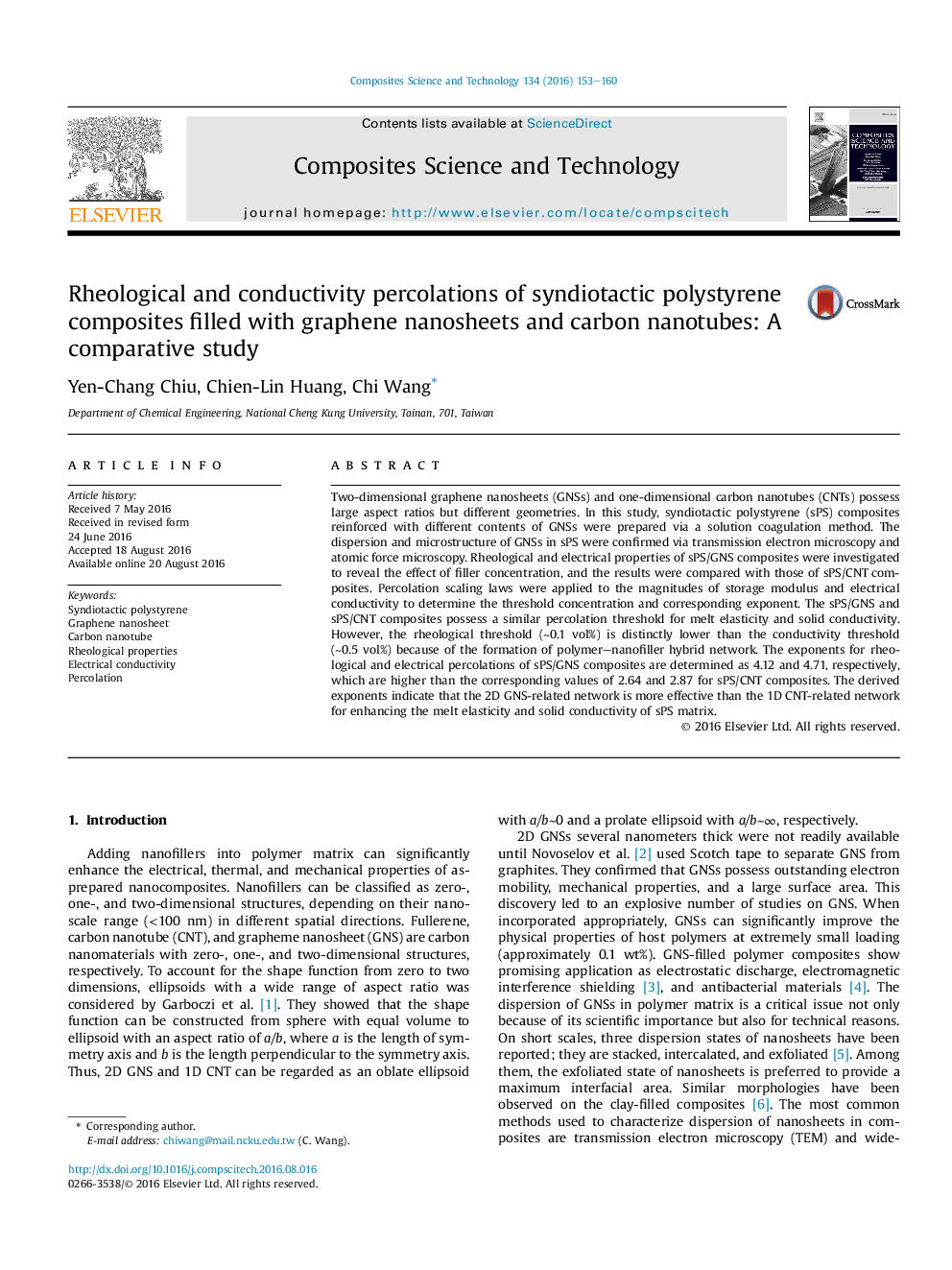| Article ID | Journal | Published Year | Pages | File Type |
|---|---|---|---|---|
| 7215119 | Composites Science and Technology | 2016 | 8 Pages |
Abstract
Two-dimensional graphene nanosheets (GNSs) and one-dimensional carbon nanotubes (CNTs) possess large aspect ratios but different geometries. In this study, syndiotactic polystyrene (sPS) composites reinforced with different contents of GNSs were prepared via a solution coagulation method. The dispersion and microstructure of GNSs in sPS were confirmed via transmission electron microscopy and atomic force microscopy. Rheological and electrical properties of sPS/GNS composites were investigated to reveal the effect of filler concentration, and the results were compared with those of sPS/CNT composites. Percolation scaling laws were applied to the magnitudes of storage modulus and electrical conductivity to determine the threshold concentration and corresponding exponent. The sPS/GNS and sPS/CNT composites possess a similar percolation threshold for melt elasticity and solid conductivity. However, the rheological threshold (â¼0.1Â vol%) is distinctly lower than the conductivity threshold (â¼0.5Â vol%) because of the formation of polymer-nanofiller hybrid network. The exponents for rheological and electrical percolations of sPS/GNS composites are determined as 4.12 and 4.71, respectively, which are higher than the corresponding values of 2.64 and 2.87 for sPS/CNT composites. The derived exponents indicate that the 2D GNS-related network is more effective than the 1D CNT-related network for enhancing the melt elasticity and solid conductivity of sPS matrix.
Keywords
Related Topics
Physical Sciences and Engineering
Engineering
Engineering (General)
Authors
Yen-Chang Chiu, Chien-Lin Huang, Chi Wang,
